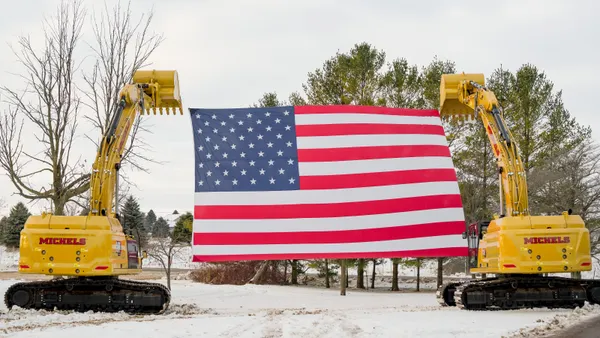Dive Brief:
- Originally designed to track injury data for professional athletes, a new belt-clipped sensor from Triax Technologies reports worker movement data to the cloud every 10 seconds, providing alerts for trips and falls on the job site, according to Engineering News-Record.
- Spot-r sensor technology includes an accelerometer, gyroscope and altimeter to measure injury type and severity. It also provides the geolocation of injured workers to safety managers and supervisors.
- Powered by a mesh network, belt units report data to relay boosters and sensors located across a job site. Belt units turn off automatically when not in connection with the network, and battery life is approximately one year.
Dive Insight:
The use case for safety wearables in the construction industry is two-fold: to provide instant alerts when an accident or injury has occurred (or is about to occur), and to record incident data for analysis to better manage overall job site safety. Wearables have been developed to track trips and falls, detect proximity to high voltage, measure body temperature, perspiration and heart rate, alert users of behavior that could indicate drowsiness or attention deficit and more.
Connectivity to BIM and project management systems even allows virtual zones to be tagged on the job site to alert workers to hazardous conditions or even define prescriptive clothing or body protection required to enter specific areas.
With a seemingly endless variety of applications, wearables are still focusing on specific tasks, incidents, or hazards, but it would seem likely (and cost-effective from a device purchasing and ease of use standpoint) to have a single wearable, be it wristband or belt clip or other tool, to universally collect worker movement and safety data in a way that’s integrated with a live, AR-activated job site integrated with project and safety management software.











